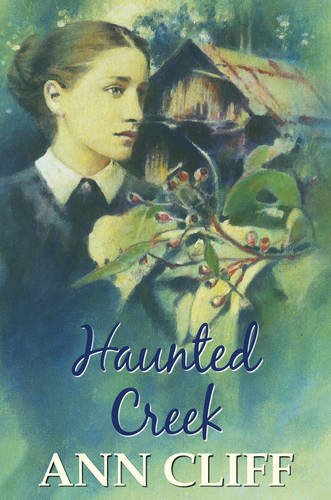Haunted Creek
In 1875, Rose Teesdale travels from England to join her husband, Luke, to live in a rough cabin in the Australian bush. She has high hopes for a new life on what she believes to be an Australian farm but faces challenges. Her husband is indifferent, the bush is a great silent forest with many terrors, and as Luke is often away, she is thrown on her own resources. After Luke’s death, she stays on, becomes resilient, survives and after a series of difficulties and misunderstandings finds renewed hope.
Haunted Creek is an historical romance peopled by well-drawn and engaging characters. Rose is a likeable heroine and a devoted mother to Ada, her tiny daughter. She is a true survivor. Luke is difficult and possesses few redeeming features. We identify with Rose’s disappointment and her frustration. The Ganai people are sympathetically portrayed and are as shadows haunting the creek. Rose’s relationship with them is convincing. Equally interesting are settlers such as Maeve, who runs the ramshackle hotel in the emergent village; Lord Barrington, a mysterious and initially sinister entrepreneur; Eric, the novel’s true hero; his sensible mother, Freda; and the schoolchildren whom Rose teaches to sew.
This historical background will be familiar to readers of Kate Grenville’s The Silent River or Jane Campion’s The Piano, set in 19th-century New Zealand; it is a world thoroughly researched and convincingly depicted. Of particular note is the embedding of little details meaningful to women such as the ‘delicate china cups’ and ‘the silk’ that emigrants wanted to bring with them to the wilderness, a raiment of European civilisation in ‘a most uncivilized place’. Finally, Haunted Creek is a beautifully written story, its world very different from the busyness of our contemporary life. Reading it was an escape into an adventure.










